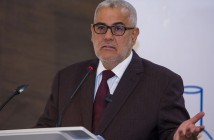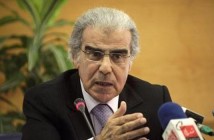By JUSTIN POPE
 Educators are thrilled to see more American college students venturing abroad — perhaps 300,000 this year alone.
Educators are thrilled to see more American college students venturing abroad — perhaps 300,000 this year alone.
Now if they can just get them to venture out of the “American bubbles” that can make the streets of study-abroad hot-spots like London, Barcelona and Florence, Italy almost feel like exclaves of Tuscaloosa or Ann Arbor.
They’re trying. After decades of laissez-faire and faith that just breathing the air in foreign lands broadens horizons, American colleges and international programs are pressing students harder to get out of their comfort zones. It’s happening in popular destinations as well as more exotic spots in Asia and Africa, where there are fewer Americans, but language and culture barriers make them even more tempted to stick together.
And it’s happening online, where one study found Americans on study abroad spent more than four hours per night communicating back home via the likes of Skype, Google Chat and Facebook.
Their tools: less free time, mandatory local internships, signed promises students won’t speak English, and even “Amazing Race”-style solo scavenger hunts — like one where wide-eyed Nebraska students were dropped off their first morning in China in a distant corner of their new city with $5 and instructions to find their way back home alone.
“Unless something is set up that really forces them to get involved in that environment, they really don’t,” said William Finlay, a University of Georgia sociologist who became so frustrated with the bubble leading trips to Italy that he set up a new, intensive program that takes Georgia students to work in impoverished South African townships.
“We push them to do things that are uncomfortable,” Finlay said. “Sometimes they get overwhelmed.”
About 260,000 American college students studied abroad in 2008-2009, the years measured in the latest annual survey by the Institute of International Education. That was a small dip from the previous year, likely caused by the economy. Otherwise the numbers have been rising steadily for 25 years and that’s expected to resume.
An influential 2005 report by the Abraham Lincoln Commission set a goal of reaching 1 million students a year by 2016-17 and making study abroad virtually as common and simple as enrolling in college
In short, study abroad is following — a few decades behind — changes in higher education itself. Once reserved for a wealthy and adventuresome elite, it’s now reaching a wider, more diverse population which often has less travel experience.
But also like higher ed, study abroad is getting more expensive, and facing pressure to demonstrate its educational worth. That’s harder on the short-term and summer trips — less than a semester — that account for most of the growth, and at the “safer” destinations of Western Europe that remain the most popular.
The danger is that it’s become easier to head off on what’s supposed to be a voyage of discovery and fail to immerse oneself in the local culture.
“People want real outcomes, said Mark Lenhart, executive director of CET Academic Programs, which sends about 1,100 students per year from feeder colleges like Vanderbilt and Middlebury to programs in seven countries. “They want to come home with big improvements in their language and a really deep understanding of the place.”
That means giving at least some students a nudge, says Lenhart, whose programs make students live with local roommates. On his own study abroad experience in China years ago, Lenhart remembers the Americans sticking together, fueling each other’s griping about the amenities. When they’re sharing a room with a local and can only speak in Mandarin, they think twice about going to the trouble to complain.
Historically, most study abroad has taken place in so-called “island” programs, where Americans live, study and often party together. U.S. colleges like keeping a close eye on the education side of the experience, particularly if they’re awarding course credit.
Island programs, educators say, remain popular and valuable for many students — particularly those new to study abroad.
Marie Hankinson loved her semester in London, but admits parts of the experience didn’t feel all that different from being back on campus at Syracuse University. She lived with four Syracuse classmates, took classes with fellow Syracuse students in a Syracuse-owned building from Syracuse-affiliated faculty.
“Our social circle was pretty much other people in the program,” says Hankinson, who says she met a few Brits through the local university union but rarely hung out with them elsewhere. Still, she says her time abroad was a great introduction to international travel that will push her to visit more exotic destinations in the coming years.
“I wanted to go abroad, but I’ll be honest, I wanted to speak English as well,” she said.
Many students want something different.
“I noticed a lot of these kids, first time out of the country, all they wanted to do was party,” said Lauren Hook, a University of Georgia senior who spent the spring of 2010 in Spain. The embarrassing sight of fellow Georgia students stumbling drunkenly around Valencia belting out Bulldog fight songs pushed her to explore more on her own. She also appreciated program activities setting up meetings between American students and locals. Meeting a Spanish boyfriend also helped.
Jake Hug, a recent graduate of Elmhurst College in Illinois, was looking for a “big change from Chicago.” With little knowledge of the country or Arabic, he took a full year away to study in a Moroccan university where he was the only American. He was grateful his program didn’t mollycoddle him. Moroccans were welcoming and he resisted the temptation to hang out with his compatriots.
“I know Americans pretty well. I didn’t go there to learn about them,” he said. Hug, who now works for a Chinese freight company, says his last two employers seemed especially interested in him because of the self-reliance he showed studying abroad.
For students who aren’t so driven, a creative push from an educator can help ensure they learn something about both themselves and their host country.
In China, students from Beloit College in Wisconsin are assigned to become a regular at some local spot, — a park, a restaurant, a corner shop — returning there repeatedly to get to know the neighborhood and people there.
University of Nebraska professor Patrice McMahon won’t go so far as her colleague who dropped students off on the far side of a city in China. But she does give ice-breaker assignments — getting their picture taken with a monk, or taking a note card with an unknown Chinese word around town until they can figure out from locals what it means.
“Our students are from small towns in Nebraska,” McMahon said. “They’re really nice kids. But they haven’t had a lot of opportunities to just figure things out.”
The people who run study-abroad programs say not every student responds. But most welcome the push.
“I always ask them, ‘Did you make some friends (in the host country)?”’ said Kelsi Cavazos, study abroad adviser at the University of Texas at Arlington. Most have, “but they always say it was hard to break free of the Americans.”
The technology bubble can both help and hurt. Fifteen years ago, study abroad programs misjudged cell phones as a danger, assuming students would use them to stay tethered home, says Mary Dwyer, CEO of IES, a nonprofit consortium that sends students abroad for 200 colleges. In fact, cell phones have transformed study abroad by helping students meet and mix with locals. Technology’s also handy in emergencies, and using it to report back to friends and families can facilitate reflection— the modern-day travel diary.
But technology can also be a crutch, and suck up valuable time. A University of California-Santa Barbara researcher found one group of students averaging 4.5 hours per day online, and 83 percent of their contacts were with other Americans, either at home or in the country they were visiting.
Other studies paint a somewhat less alarming picture. Still, some educators are taking needles to the technology bubbles. One Australian program makes students leave their iPods and sometimes all electronic devices back home on field trips, to help them focus on their experiences. Others — dumbfounded to see students busy posting pictures when they should be taking them — purposefully choose day-trip destinations where they know students won’t find Internet cafes.
“You could say there’s a spiritual shift,” said Sonja Bontrager, who leads her students from Carson University in Kansas on a semi-formal “technology fast” during the early stages of their travels in Guatemala. She says the ritual bonds the group together and makes them pay more attention to their surroundings.
She remembers the group huddled under shelter during a rainstorm at forestation project.
Normally, students with time to kill would turn habitually to their smart phones. Without that option, one noticed a column of unusual ants, and soon the whole group was on hands and knees examining the ground.
“It just makes people more aware,” Bontrager said. When the connection home is set aside, “it’s not that they’re just left with emptiness. It’s that other things can come in.”
In many cases, it isn’t the students who are to blame for the tether — it’s parents.
“I wish parents would say, ‘You’re going abroad for the semester, let’s not talk every day, let’s talk once a week,”’ Lenhart said. “If they could cut those ties a bit, it would serve them well.”






